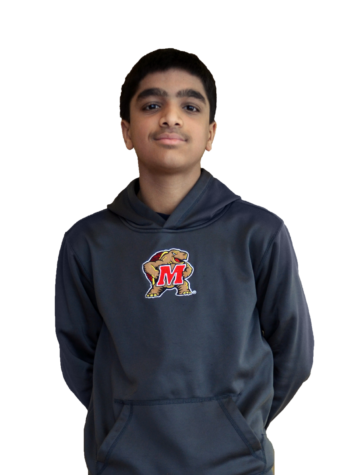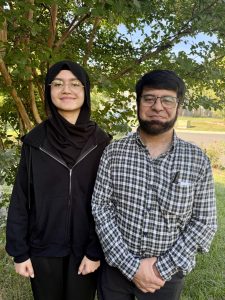Blackballed: the Compelling Story of former NBA Star Mahmoud Abdul Rauf
Kaepernick Before Kaepernick, Curry Before Curry
February 4, 2020
While most people know who Colin Kaepernick is, almost no one knows who Mahmoud Abdul Rauf is despite the fact that both, essentially, took the same action in protest but with very different publicity.
For those who need a quick reminder, Kaepernick, then the San Francisco 49ers star quarterback, took a stand against police brutality on members of the black community by kneeling during the national anthem that occurs prior to NFL games. As a result of his actions, Kaepernick received backlash, but he also received waves of support from the public and fellow athletes like LeBron James, Kevin Durant, and Jaylen Brown, as well as celebrities including Charlamagne Tha God, an Olympian famous for his own protest in 1968, John Carlos, and many others. While Kaepernick’s career was definitely sidetracked by his protesting, he did end up getting his own Nike campaign in 2018 with a slogan that focused on his bravery: “Believe in something. Even if it means sacrificing everything.” Kaepernick is no longer in the NFL, and his former team, the San Francisco 49ers, are playing in Super Bowl LIV without him.
On the other side of the spectrum lies Mahmoud Abdul-Rauf, currently the oldest player in the Big 3 league at 51 years old, a former NBA superstar who some compare to Stephen Curry (arguably the greatest shooter of all time), and a player who once played one-on-one against Michael Jordan – who had some trouble guarding him – as a high-schooler. In 1996, Abdul-Rauf took his own public stand against prejudice and lost the career he had worked so hard to earn. However, for him, there was no Nike ad campaign or support from the public, only the loss of an NBA career that could have ended in the Hall of Fame.
So who was Mahmoud Abdul-Rauf, and why don’t we know about him and his protest? Not long ago, I had the privilege to hear him speak when he came to the Islamic Society of the Washington Area, also known as ISWA, a mosque located on Briggs Chaney Road. What I learned about him both amazed and appalled me. I learned that he was a man who worked incredibly hard to make it to the toughest league in the world, only to be slowly extracted from it because of his religious beliefs. The story of Abdul-Rauf starts in Gulfport, Mississippi before heading to Baton Rouge, Louisiana and LSU, and then on to the NBA. It was an extremely hard road for him. Abdul-Rauf was actually born under the name Chris Jackson to a struggling single mother in Gulfport where he grew up without a father. Jackson was placed in special education classes at a young age, and by the age of seventeen was diagnosed with Tourette’s Syndrome, a condition that affects the nervous system and causes people to tic, or make unexpected sounds and/or movements. In order to help him deal with the condition, Jackson forced himself to do everything perfectly, such as tying his shoes or turning off the lights, two simple acts that he would do over and over – like one who suffers from OCD – as this repetitive action helped him calm the tics.
According to Abdul-Rauf, Tourettes was a blessing in disguise as it forced him to practice playing basketball non-stop because when he was playing his tics were controlled. This constant playing and focus on doing everything perfectly led to a player with almost no flaws. This devotion was important to him and his family as, because they were very poor, it was either the NBA or nothing.
Jackson averaged thirty points per game in high school as a senior, and was recruited to LSU where he became an instant sensation. After his second season at LSU in 1990, he left school and was chosen with the third pick in the draft by the Denver Nuggets. In Jackson’s first season in the NBA, he averaged 14 points per game, but in his second season, he dropped to 10 points a game. The reason for this, he said, was that he felt empty, or insignificant, which led to his conversion to Islam during that time. After converting to Islam, and thus, finding himself, Mahmoud averaged 19 points a game and was named the NBA’s Most Improved Player for the 1992-93 season. This was followed by several strong seasons for him before the league and the public turned on him.
During the 1996 season, Abdul-Rauf decided he would not stand for the national anthem. According to Jesse Washington’s 2016 article about Abdul-Rauf in The Undefeated, he believed the flag was a symbol of oppression and racism, so he stayed in the locker room during the anthem. He told Washington, “You can’t be for God and be for oppression. It’s clear in the Qur’an, Islam is the only way.” He went unnoticed until March, when a reporter wrote about Mahmoud’s absence during the anthem. NBA Commissioner David Stern suspended Mahmoud for one game. Ultimately, Abdul-Rauf made a compromise with the league that stated that he could stand for the anthem but would be allowed to close his eyes and look downward in prayer.
In the 2004 documentary By the Dawn’s Early Light: Chris Jackson’s Journey to Islam, Hamza Yusuf Hanson, a Muslim scholar at Zaytuna Institute says, “Now when the Jehovah’s Witnesses had done that, and there are Jehovah’s Witness basketball players who refused to stand up for the national anthem, nobody mentioned them, [it] didn’t become a huge news story, but the fact that [Mahmoud Abdul-Rauf] was a black man and a Muslim, there’s a double combination, we’ve got a problem here.”
Abdu-Rauf’s career trended downward after this as his minutes fell and his rhythm, which had been so important to his development, was tampered with. He told Washington that his playing time and the team’s commitment to him coincided with his silent opposition: “It’s a process of just trying to weed you out. This is what I feel is going to happen to [Kaepernick]. They begin to try to put you in vulnerable positions. They play with your minutes, trying to mess up your rhythm. Then they sit you more. [And] then what it looks like is, well, the guy just doesn’t have it anymore, so we trade him.”
Today, Abdul-Rauf travels to under-served communities in the U.S. and around the world and talks about his story, the ill-effects of drugs and violence, and Islam. He also teamed up with Islamic Relief, an aid agency, to fund food, emergency aid, and access to clean water with water wells in Kenyan communities. He has not entirely left basketball behind, though, as he currently plays in the Big 3 league for the 3-Headed Monsters.
As for how it has all worked out, Abdul-Rauf says that he still receives death threats and in 2001, his house, that was still under construction, was burned down, and the letters “KKK” were spray-painted on the walls, according to Tulsa, Oklahoma news station News On 6. This, however, has not changed his attitude about who he is or what he stands for. “It’s priceless to know that I can go to sleep knowing that I stood to my principles,” he told The Undefeated’s Washington. “Whether I go broke, whether they take my life, whatever it is, I stood on principles. To me, that is worth more than wealth and fame.”











































